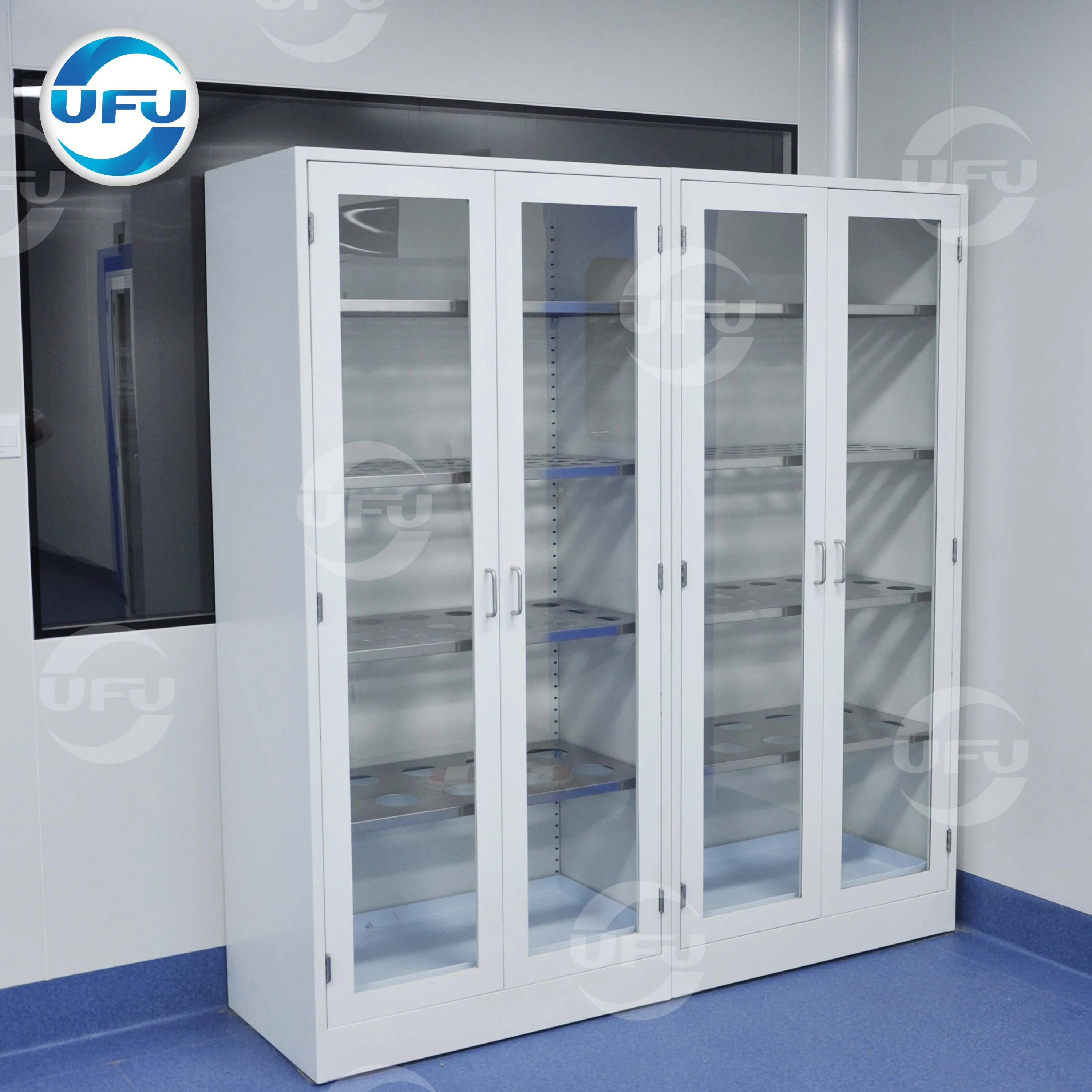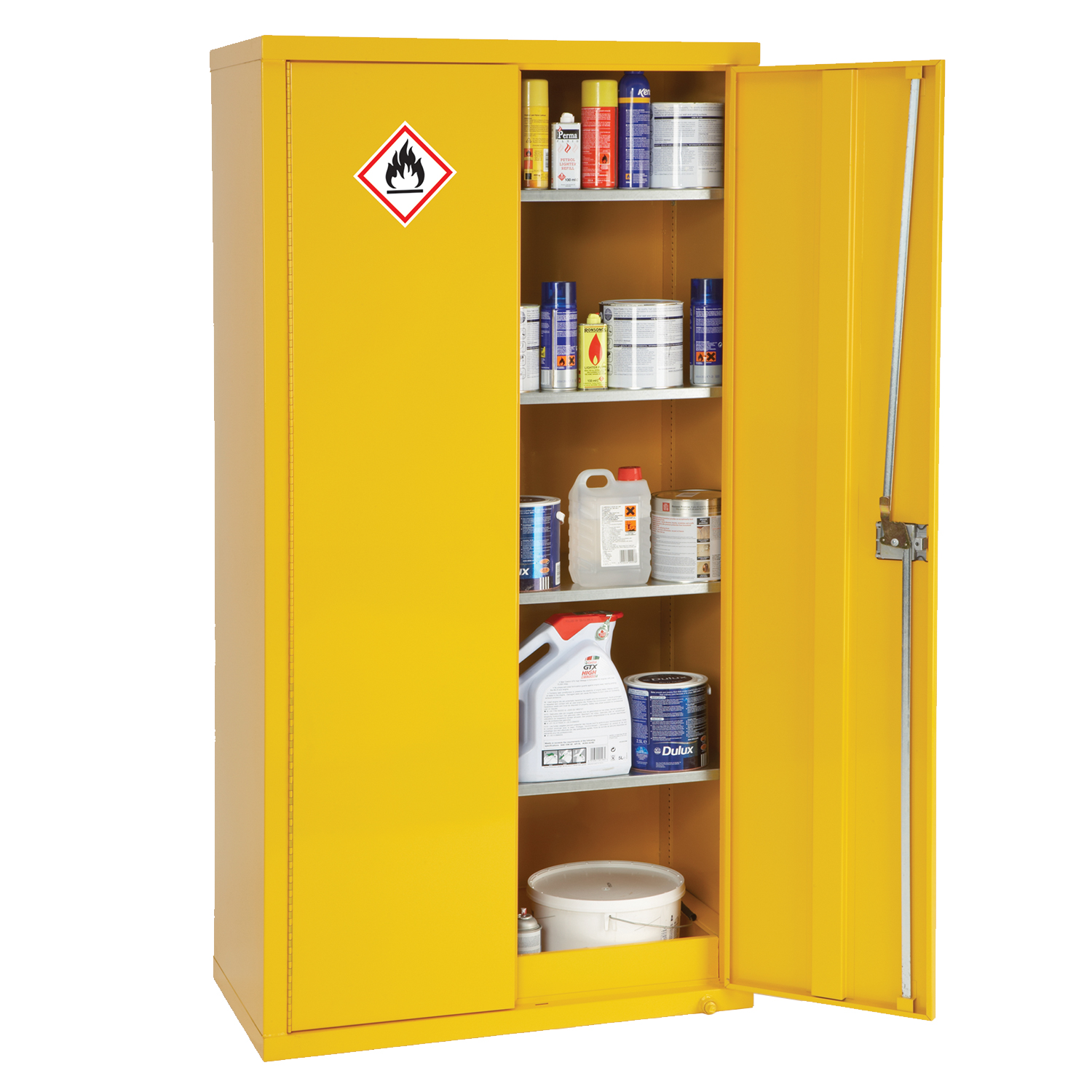Metal Chemical Storage Cabinet

Metal chemical storage cabinets are essential safety equipment designed to securely store hazardous chemicals in various settings, such as laboratories, industrial facilities, and workshops. These cabinets are built to withstand the rigors of chemical exposure and provide a safe and organized environment for handling and storing potentially dangerous substances.
Construction and Materials
Metal chemical storage cabinets are typically constructed from robust materials like steel or stainless steel, chosen for their durability, resistance to corrosion, and ability to withstand the harsh conditions associated with chemical storage. The construction involves sturdy frames, reinforced doors, and secure locking mechanisms to ensure the safe containment of chemicals.
Features
Metal chemical storage cabinets are equipped with a range of features to enhance safety and functionality:
- Ventilation: Some cabinets include ventilation systems to allow for the safe release of fumes and gases generated by stored chemicals. This helps prevent the buildup of hazardous vapors and improves air quality within the storage area.
- Spill Containment: Many cabinets incorporate spill containment trays or liners to prevent the spread of chemicals in case of accidental spills. These trays are designed to capture leaks and contain the spilled substances, minimizing environmental contamination and safety hazards.
- Chemical Compatibility: The materials used in the construction of the cabinet, such as the paint or coating, are chosen for their compatibility with the specific chemicals being stored. This ensures that the cabinet itself does not react with the chemicals and compromise their integrity.
- Labeling and Organization: Metal chemical storage cabinets often have shelves, drawers, or compartments for organized storage. Clear labeling systems help with easy identification and retrieval of chemicals, promoting efficiency and safety.
- Security: Secure locking mechanisms, including keyed locks or combination locks, are essential for controlling access to hazardous chemicals and preventing unauthorized access. These locks contribute to overall safety and regulatory compliance.
Purpose and Importance
Metal chemical storage cabinets play a crucial role in ensuring safety and compliance in various settings:
- Laboratories: In laboratories, these cabinets are essential for storing reagents, solvents, acids, and other hazardous chemicals used in research and experimentation. They provide a safe and controlled environment for handling and storing these substances, protecting researchers and minimizing the risk of accidents.
- Industrial Facilities: Industrial facilities often use large quantities of chemicals in manufacturing processes. Metal chemical storage cabinets are essential for storing these chemicals safely, minimizing the risk of spills, leaks, or fires. They also help maintain compliance with environmental regulations and workplace safety standards.
- Workshops: Workshops may store various chemicals, such as paints, solvents, and cleaning agents. Metal chemical storage cabinets provide a secure and organized storage solution, preventing accidental spills and ensuring proper ventilation to minimize exposure to hazardous fumes.
Benefits of Metal Chemical Storage Cabinets
Metal chemical storage cabinets offer numerous benefits over other storage options:
- Enhanced Safety: The robust construction, spill containment features, and secure locking mechanisms of metal chemical storage cabinets significantly enhance safety in handling and storing hazardous chemicals. They minimize the risk of accidents, spills, and unauthorized access.
- Compliance: Metal chemical storage cabinets are designed to meet industry standards and regulatory requirements for chemical storage. They help facilities comply with safety regulations and environmental protection laws, ensuring responsible handling of hazardous substances.
- Durability: Metal chemical storage cabinets are built to withstand the rigors of chemical exposure and frequent use. They are resistant to corrosion and damage, ensuring long-term reliability and minimizing the need for replacement.
- Organization: These cabinets provide organized storage solutions for various chemicals, facilitating efficient retrieval and reducing the risk of misidentification or accidental mixing.
- Cost-Effectiveness: While metal chemical storage cabinets may have a higher initial cost compared to some other storage options, their durability, safety features, and compliance benefits make them a cost-effective investment in the long run.
Types of Metal Chemical Storage Cabinets

Metal chemical storage cabinets are essential for safely storing hazardous materials in various settings, from laboratories and industrial facilities to schools and hospitals. They are designed to protect both people and the environment from potential risks associated with chemical exposure.
Metal chemical storage cabinets come in a variety of designs and functionalities, each tailored to specific storage needs. Choosing the right type of cabinet depends on the types of chemicals being stored, the volume of storage required, and the specific safety regulations that apply.
Types of Metal Chemical Storage Cabinets
The following are some common types of metal chemical storage cabinets:
- Flammable Liquid Cabinets: These cabinets are specifically designed to store flammable liquids, such as gasoline, kerosene, and alcohol. They are typically constructed with double-walled steel and equipped with a self-closing door, a vent, and a spill containment tray. The double-walled construction helps to prevent the spread of fire in the event of a leak or spill. The vent allows for the safe release of flammable vapors, while the spill containment tray helps to capture any spills and prevent them from spreading. Flammable liquid cabinets are also often equipped with a fire suppression system to help extinguish any fires that may occur.
- Corrosive Chemical Cabinets: Corrosive chemicals, such as acids and bases, require special storage considerations. Corrosive chemical cabinets are designed to withstand the effects of these substances. They are often made from materials that are resistant to corrosion, such as stainless steel or epoxy-coated steel. These cabinets may also have special features, such as a lining that protects the cabinet from the corrosive effects of the chemicals.
- General Purpose Cabinets: General purpose cabinets are designed to store a variety of chemicals, including non-flammable and non-corrosive materials. These cabinets are typically made from steel and have a variety of features, such as adjustable shelves, drawers, and doors. They are often used for storing chemicals that are not considered hazardous, such as cleaning supplies or laboratory reagents.
Features and Specifications
The following table summarizes the key features and specifications of different types of metal chemical storage cabinets:
| Type | Materials | Features | Applications |
|---|---|---|---|
| Flammable Liquid Cabinets | Double-walled steel, fire-resistant paint | Self-closing door, vent, spill containment tray, fire suppression system | Storage of flammable liquids, such as gasoline, kerosene, and alcohol |
| Corrosive Chemical Cabinets | Stainless steel, epoxy-coated steel, acid-resistant lining | Corrosion-resistant materials, spill containment tray | Storage of corrosive chemicals, such as acids and bases |
| General Purpose Cabinets | Steel, adjustable shelves, drawers, doors | Storage of non-flammable and non-corrosive chemicals, cleaning supplies, laboratory reagents |
Safety Considerations and Regulations: Metal Chemical Storage Cabinet

Storing chemicals in a metal cabinet is crucial for safety and compliance with regulations. These cabinets are designed to protect people and the environment from potential hazards associated with chemical storage.
Safety Regulations and Standards
Safety regulations and standards governing chemical storage are designed to minimize risks and ensure responsible handling. These regulations are enforced by government agencies and industry organizations to protect workers, the public, and the environment. Some key regulations include:
- OSHA (Occupational Safety and Health Administration): OSHA’s Hazard Communication Standard (29 CFR 1910.1200) requires employers to provide employees with information about the hazards of chemicals they work with, including proper storage procedures.
- NFPA (National Fire Protection Association): NFPA standards, such as NFPA 45, address the storage of flammable and combustible liquids. These standards provide guidance on the design, construction, and use of storage cabinets for hazardous materials.
- EPA (Environmental Protection Agency): The EPA regulates the disposal and storage of hazardous waste. This includes requirements for container labeling, secondary containment, and spill prevention.
Potential Hazards Associated with Chemical Storage
Chemical storage can pose several hazards, including:
- Fire and Explosion: Flammable liquids and combustible materials can ignite easily, causing fires or explosions.
- Toxic Gases and Vapors: Some chemicals release toxic gases or vapors that can be harmful if inhaled.
- Corrosive Materials: Corrosive chemicals can damage skin, eyes, and other materials.
- Reactivity: Certain chemicals can react with each other or with air or water, creating hazardous conditions.
- Spills and Leaks: Spills and leaks can contaminate the environment and pose health risks.
How Metal Cabinets Mitigate Risks
Metal cabinets are designed to address these hazards and ensure safe chemical storage:
- Fire Resistance: Metal cabinets are typically constructed from fire-resistant materials that can withstand high temperatures, preventing the spread of fire.
- Ventilation: Some cabinets have built-in ventilation systems that allow for the safe release of vapors, reducing the risk of toxic gas buildup.
- Spill Containment: Cabinets often have a secondary containment system to capture spills and prevent them from spreading.
- Lockable Doors: Lockable doors prevent unauthorized access and help ensure that chemicals are stored securely.
- Chemical Compatibility: Metal cabinets are available in various materials, such as stainless steel, that are compatible with a wide range of chemicals.
Selecting the Appropriate Cabinet
Choosing the right metal cabinet is crucial for ensuring safe and compliant chemical storage. Here are some factors to consider:
- Cabinet Size: The size of the cabinet should be sufficient to accommodate the quantity and types of chemicals being stored. Overcrowding can increase the risk of spills and accidents.
- Ventilation: Ventilation systems should be adequate for the types of chemicals being stored. Consider the vapor pressure and flammability of the chemicals.
- Safety Features: Features like spill containment trays, fire suppression systems, and lockable doors should be selected based on the hazards posed by the chemicals being stored.
- Chemical Compatibility: The cabinet material should be compatible with the chemicals being stored to prevent corrosion or reactions.
- Compliance with Regulations: Ensure that the cabinet meets all applicable safety regulations and standards.
Metal chemical storage cabinets offer a robust and secure solution for safeguarding hazardous materials, whether in industrial settings or even at home. For example, pool chemical storage cabinets are crucial for safely storing chlorine and other pool chemicals, preventing accidental spills and ensuring compliance with safety regulations.
Like their counterparts in industrial environments, these cabinets are designed to withstand the elements and prevent unauthorized access, contributing to a safer and more secure environment for everyone.
Metal chemical storage cabinets are essential for keeping hazardous materials secure and organized. When choosing a cabinet, consider a stainless steel storage cabinet for its durability and resistance to corrosion. These cabinets offer a hygienic and stylish solution for storing chemicals, ensuring safety and compliance with regulations.